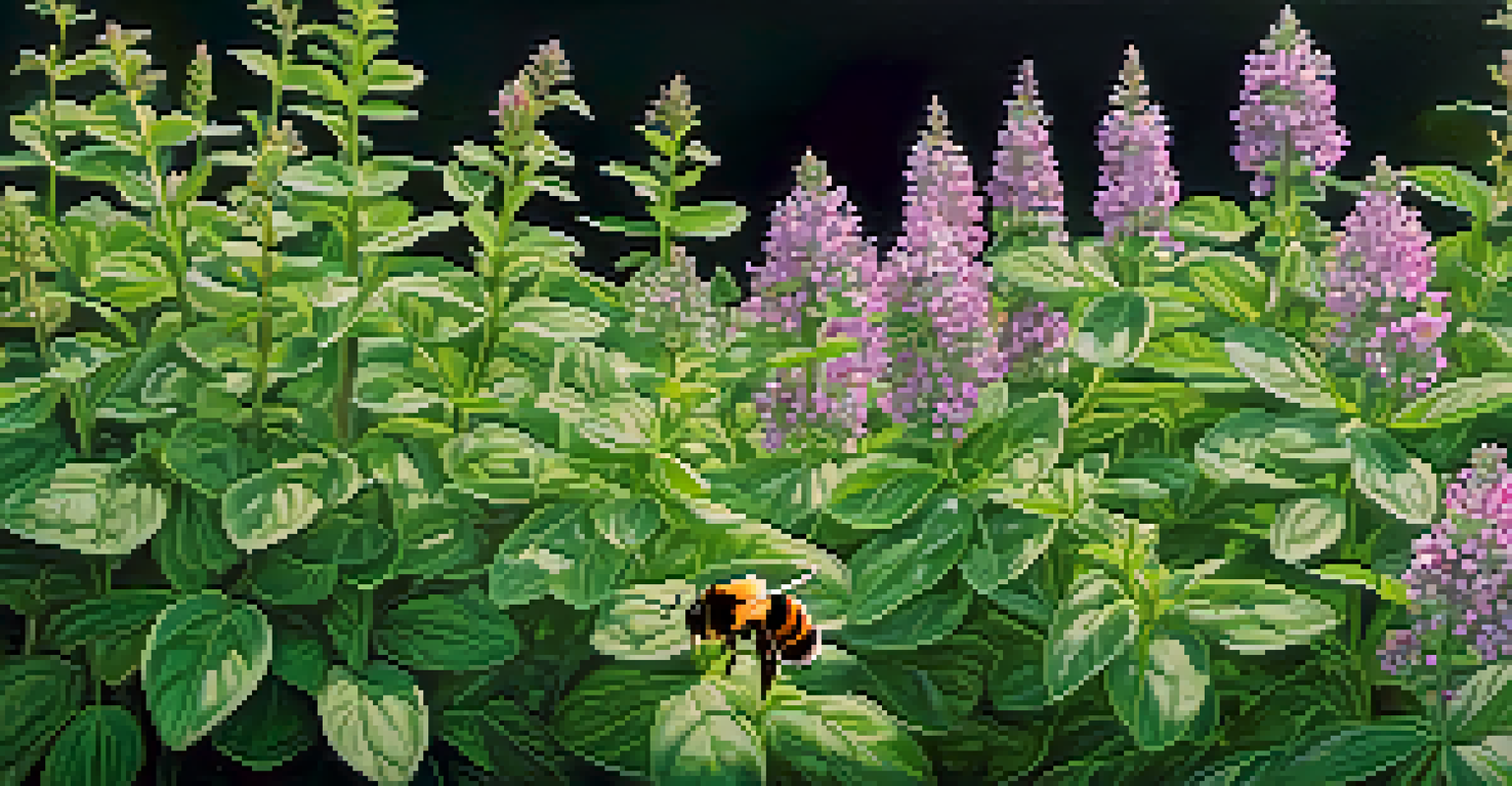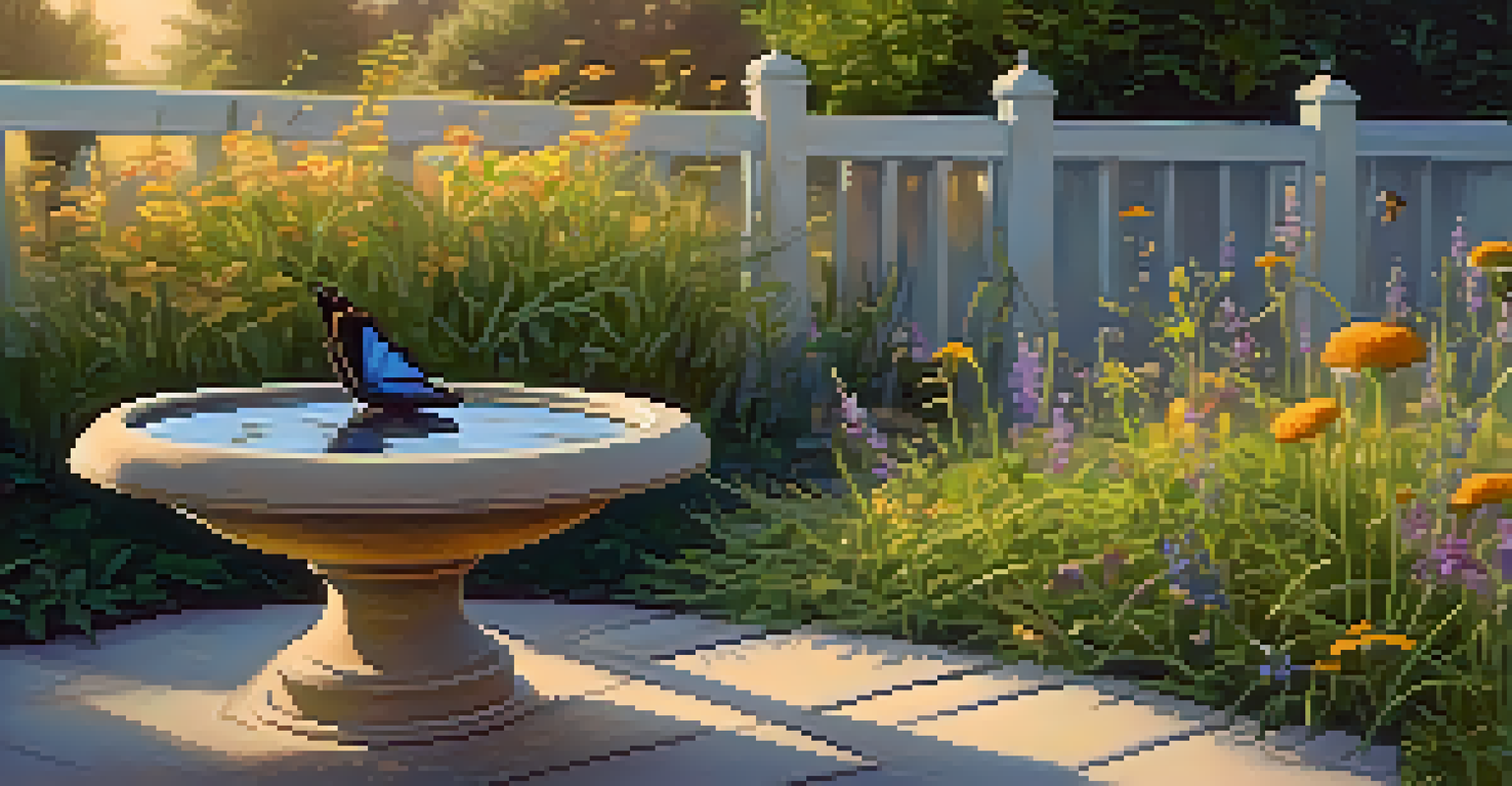Companion Planting for Pollinator Attraction in Gardens

Understanding Companion Planting Basics
Companion planting is the practice of growing different plants together for mutual benefits. This method can enhance growth, ward off pests, and improve pollination. It's like having a supportive friend in your garden, helping each other thrive.
To plant a garden is to believe in tomorrow.
By strategically pairing plants, gardeners can create an environment that encourages the presence of beneficial insects. For example, planting marigolds alongside vegetables can attract pollinators while deterring harmful pests. It's a win-win for your garden ecosystem.
Beyond just attracting pollinators, companion planting can also improve soil health and increase crop yields. The right combinations allow plants to share nutrients, leading to a more robust garden overall.
The Role of Pollinators in Your Garden
Pollinators, such as bees, butterflies, and hummingbirds, play a crucial role in fertilizing plants. They help plants reproduce by transferring pollen from one flower to another, leading to fruit and seed production. Without these busy little helpers, many of our favorite fruits and vegetables would be scarce.

The presence of pollinators not only enhances the beauty of your garden but also boosts biodiversity. A diverse garden attracts a variety of pollinators, creating a more resilient ecosystem. This diversity is essential for the health of the environment and your garden's productivity.
Companion Planting Benefits
Pairing plants strategically can enhance growth, deter pests, and improve pollination.
Encouraging pollinators through companion planting not only benefits your garden but also supports local ecosystems. By creating a welcoming environment for these creatures, you're playing a part in preserving biodiversity.
Choosing the Right Companion Plants
Selecting the right companion plants is key to attracting pollinators. Some plants, like sunflowers and coneflowers, are particularly appealing to bees and butterflies. Consider incorporating these vibrant blooms to create a pollinator-friendly oasis.
The greatest threat to our planet is the belief that someone else will save it.
It's also important to think about plant heights and bloom times. Mixing taller plants with shorter ones can create layers of interest, while staggered blooming times ensure there's always something flowering in your garden. This provides a continuous food source for pollinators throughout the growing season.
Incorporating herbs like basil, oregano, and thyme not only adds flavor to your meals but also attracts beneficial insects. These plants often produce small flowers that are very attractive to pollinators, increasing the chances of visits from these essential garden allies.
Creating a Pollinator-Friendly Environment
In addition to companion planting, creating a welcoming space for pollinators involves providing habitat and shelter. Consider leaving some areas of your garden a bit wild, with native grasses or wildflowers. This not only attracts pollinators but also other beneficial wildlife.
Water sources, like birdbaths or shallow dishes filled with pebbles and water, can also attract pollinators. Just like us, they need hydration, especially during hot summer months. A simple water feature can make your garden a go-to spot for thirsty bugs.
Pollinators Boost Garden Health
Attracting pollinators like bees and butterflies is crucial for increasing biodiversity and productivity in your garden.
Lastly, avoid using pesticides, which can harm pollinators. Instead, explore natural pest control methods, such as introducing ladybugs or planting pest-repelling herbs. By prioritizing pollinator health, you're ensuring the longevity and vitality of your garden.
The Importance of Native Plants
Native plants are those that have naturally evolved in your region and are well-suited to local climate conditions. These plants often attract native pollinators more effectively than non-natives. By incorporating native species, you're providing the food and habitat that local pollinators have evolved to depend on.
For example, planting native wildflowers can dramatically boost your garden's appeal to butterflies and bees. These plants are often better adapted to local soils and weather, making them easier to grow and maintain. Plus, they typically require less water and care than non-native species.
Supporting native plants not only helps your garden flourish but also promotes ecological balance. By fostering a landscape that aligns with local ecosystems, you're encouraging the health of your entire community.
Seasonal Considerations for Planting
Timing is everything when it comes to companion planting for pollinator attraction. Planting in early spring ensures that flowers bloom when pollinators are most active. This way, you're providing food sources right when they need it.
Consider the growing cycles of your plants to maximize bloom times. For instance, early bloomers like crocuses can attract pollinators at the start of the season, while late bloomers like asters can provide sustenance as summer fades. A carefully planned garden can offer a continuous buffet for pollinators.
Native Plants Support Ecosystems
Incorporating native plants not only attracts local pollinators but also promotes ecological balance and requires less maintenance.
Seasonal maintenance is also vital. Regularly deadheading spent blooms not only keeps your garden looking tidy but encourages more flowers to form. This can extend the blooming season, resulting in a longer period of pollinator activity in your garden.
Monitoring and Enjoying Your Pollinator Garden
Once you've established your companion planting strategy, take the time to observe your garden. Watching pollinators in action can be a rewarding experience, providing insight into which plants are attracting them. Keep a journal to note which combinations yield the best results.
You may notice that certain plants attract specific types of pollinators, which can help you refine your planting choices in the future. For instance, if you see many bees visiting your sunflowers, consider adding more of those to your garden layout.

Enjoying your garden goes beyond aesthetics; it’s about fostering a vibrant ecosystem. By creating a space that supports pollinators, you’re not only enhancing your garden’s beauty but also contributing to environmental sustainability.